I remember April like it was yesterday — in fact, I’m convinced it
was yesterday. I don’t understand how life accelerates exponentially every year, but I do know that one of the things I can do to slow it down is to stop, reflect and experience the garden in as many ways as I can.
When I think about all that’s happened since April and what I’ve learned, life seems to take on a bit more clarity. Spring was as stunning as any in recent memory, and once June hit, the plants turned on their afterburners and never looked back. There were failures, successes, conundrums, unexpected joys and unexpected visitors — and there’s still the awesome glory of fall and the best planting season of them all.
I hope that by sharing my gardening year with you, you’ll start to remember yours, dig into the soil of memory a bit deeper and celebrate the good things gardening brings to our lives. What would life be without a garden? I shudder to think about it.
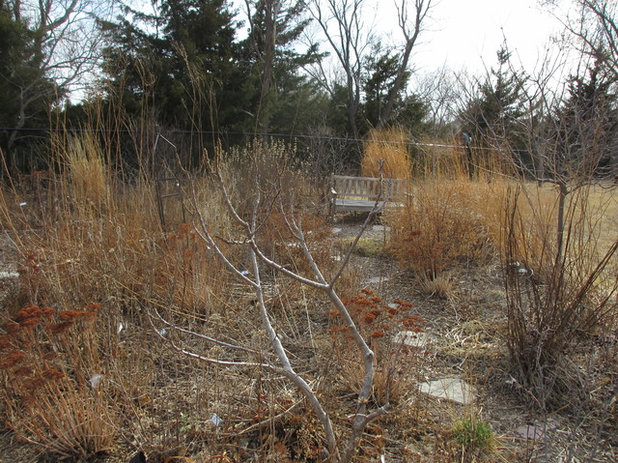
Benjamin Vogt / Monarch Gardens
Spring: Postponing the spring cleaning. I waited much later than usual to cut down the garden for two reasons: 1. I think it looks gorgeous in winter and 2. I didn’t want to step on any overwintering butterflies or other insects still hibernating. Every day that I refused to go outside felt like a spring coiling tighter and tighter. Even as green began to show, I waited until I saw a few insects flying around.
So, it wasn’t until our last snow, around April 15, that I succumbed and brought out the cordless trimmer. I mulched with the cut-down perennials and grasses and sighed deeply. Next year I might wait until May 1 if I can stand it.
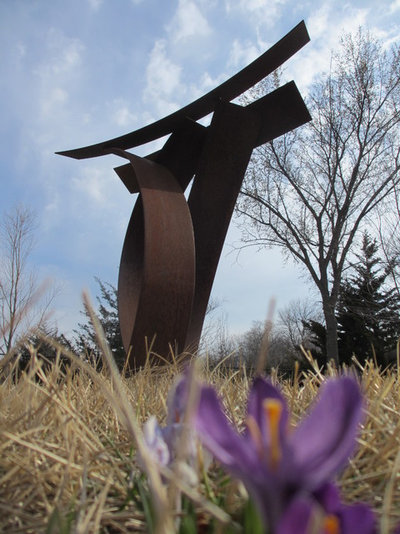
Benjamin Vogt / Monarch Gardens
A failure of bulbs. Several years ago I planted hundreds upon hundreds of crocus bulbs in our back lawn; oh, the dreams I had of looking at thousands of flowers every March into April. But with a lack of snow cover, perhaps combined with our finicky clay soil, there have been fewer and fewer flowers over the years. Oh well. I tried.
The first lesson in gardening is to fail better — learn from mistakes and try something else. (I’m hoping to tear out the lawn and put in a new prairie garden.) Of course, our yard art helps make up for the lack in crocuses, don’t you think?
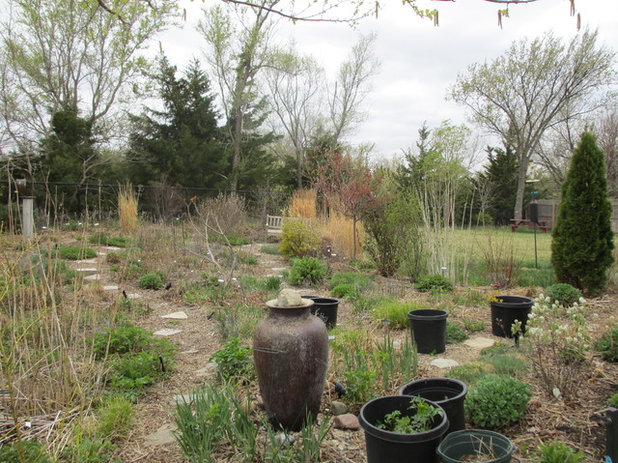
Benjamin Vogt / Monarch Gardens
Annual spring shock. The green came back in late April like a sneaky rabbit (trust me, the rabbits are out there). I’m not sure why, but it never ceases to amaze me when perennials come back. I just can’t believe that something I grew and dug in returns every year like a perfect boomerang.
Maybe I have an inferiority complex or think I’m a terrible gardener, but I can’t be the only one who balances precariously on the thin line between hope and fear every spring. The garden teaches you to slowly let go of this balancing act over many years as you give way to being humbled and trusting in the miracle of all four seasons.
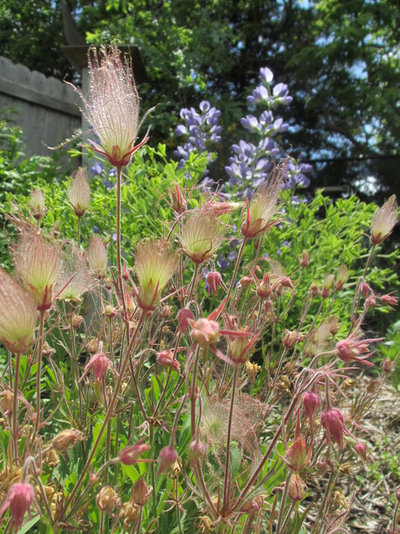
Benjamin Vogt / Monarch Gardens
Smoking hot. What a May it was for prairie smoke (
Geum triflorum). I just love this Rocky Mountain/Northern Plains native ground cover for dry, sunny areas. Above are the glittery seed heads after bumblebees pollinate them. I don’t know why I haven’t planted about 20 of these in the garden. I must get more of these sown for next year, or I’ll be quite upset with myself.
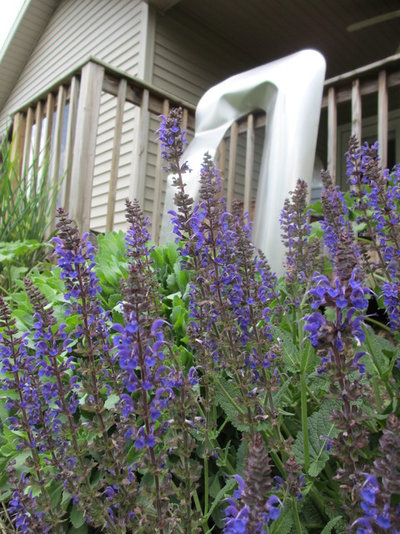
Benjamin Vogt / Monarch Gardens
Tearing out and editing. Salvia makes a perfect frame for this sculpture celebrating my wife’s doctoral degree; she graduated this spring.
I sowed a mix of prairie short grasses in a new bed just behind the salvia, where I removed three towering and overbearing butterfly bushes. Next year little bluestem (
Schizachyrium scoparium), sideoats grama (
Bouteloua curtipendula) and blue grama (
Bouteloua gracilis) will be a lush, minimalist carpet around this modern artwork. I think it will look good, but you never know until you try.
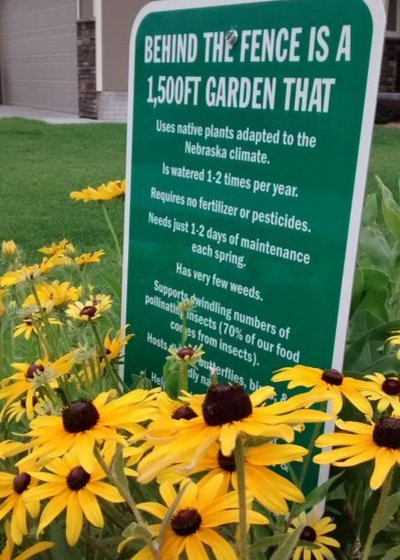
Benjamin Vogt / Monarch Gardens
A little education. I raised some
Rudbeckia hirta over the previous year, planted in fall 2013, and this year they just shone around the garden sign advertising what our sustainable landscape achieves. I hesitated ordering and placing the sign last fall, but I want people to know that gardens have power and resonance beyond being a place just for ourselves — when you welcome in other life and think sustainably, gardening gets elevated in untold ways.
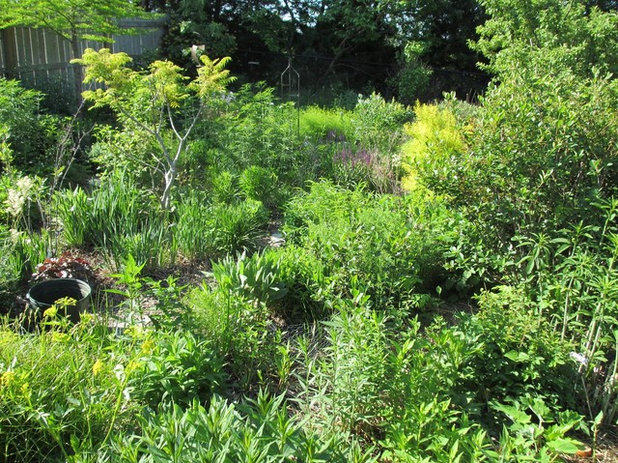
Benjamin Vogt / Monarch Gardens
Summer: up, up and away. After being gone for two weeks in June, we came back to a garden that I’m fairly certain someone laced with growth hormones. Every year it stuns me how bare earth becomes this mass of foliage — but that’s the magic of herbaceous perennials and grasses.
While some plants didn’t come back, I never wallowed in self-pity (not for long anyway), and soon took joy in the opportunity to try other plants and design ideas. I look at some of my plants now and wish they’d die so I could try something fresh — is that bad of me? I have yet to be ruthless about digging up underperformers whose aesthetic or wildlife value just isn’t up to snuff, like a bunch of iris I planted seven years ago.
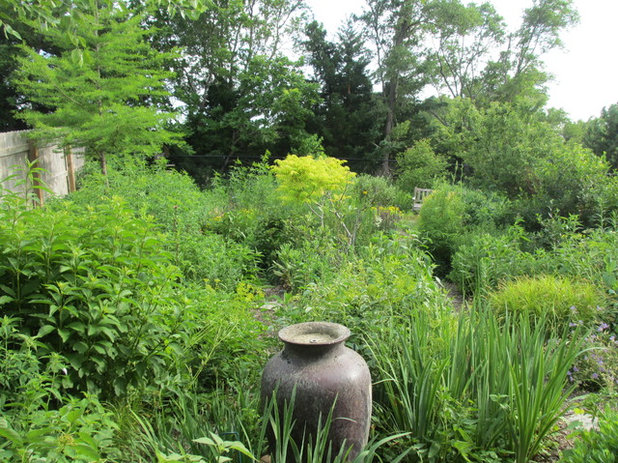
Benjamin Vogt / Monarch Gardens
Hit the pause button. Ah, early July: so lush and thick, when nothing had yet toppled over in a windy storm. Let us all stop a moment to admire this vista full of so much potential. I love to kneel down among the foliage so no one can see me and take a moment to listen and see what comes my way. Who needs garden benches? All they do is keep you up and away from all the action. Somehow everything seems quieter and focused when you’re sitting on the soil, and for this reason you’ll find me kneeling in the garden even in January.
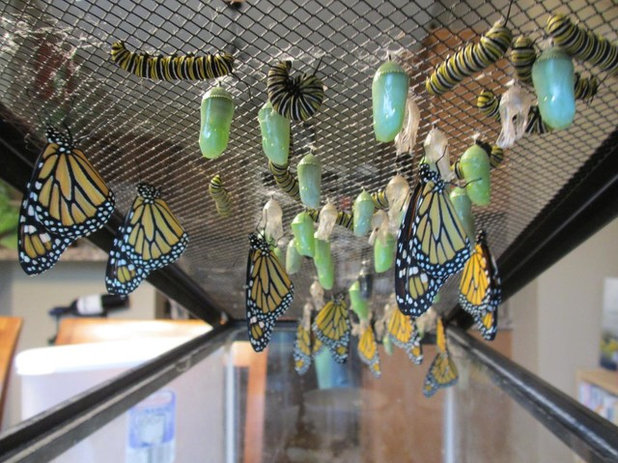
Benjamin Vogt / Monarch Gardens
A monarch resurgence. I raise monarch butterflies every year to make up for a lost childhood of introverted Lego construction. In 2013 I found only five monarch eggs in our garden, but this year I am on pace to release over 130 butterflies. I was shocked when in late July, on just one day, I found over two dozen eggs. This is how nature surprises you, as long as you are ready with what it needs most: native plants and a garden full of diverse structure, blooms and plant types.
Discover how to garden for monarchs
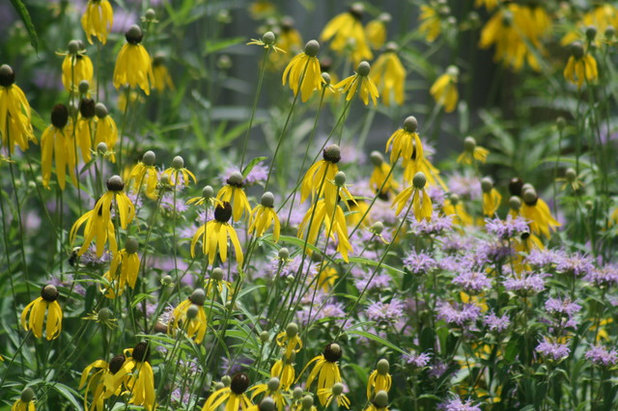
Benjamin Vogt / Monarch Gardens
Unexpected vistas. Never leave your camera inside when you walk your garden. I probably snap hundreds of images each week, but I never really know how I’ll feel about them (or the garden) until I get them on the computer. Looking at this image helped me discover a plant palette I never intended to have; it sort of happened on its own. I love it! Two common natives, gray-headed coneflower (
Ratibida pinnata) and wild bergamot (
Monarda fistulosa) look fantastic together, don’t they? What a gorgeous day this was.
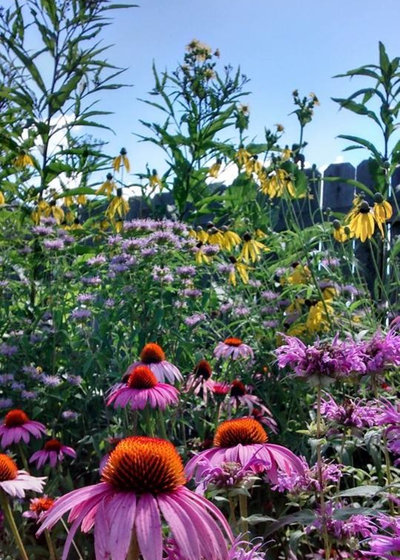
Benjamin Vogt / Monarch Gardens
More design surprises. Another angle of the area in the previous image shows a totally different scene that’s interesting in another way. I like how the low purple coneflowers in the front help create a nice angle up toward the bee balm and gray-headed coneflowers, then up to some compass plant (
Silphium laciniatum) and ironweed (
Vernonia fasciculata) and finally up to a blue summer sky. Luck or planning? Does it matter? Often they are two sides of the same coin.
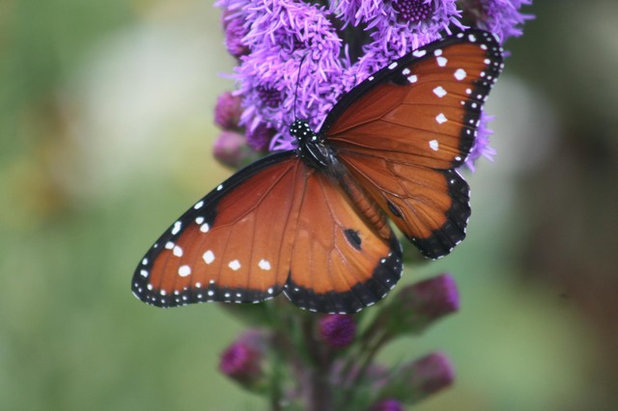
Benjamin Vogt / Monarch Gardens
A rare visitor from the south. My wife and I were getting ready to leave the house one afternoon. I had been outside photographing tons of monarchs, swallowtails and bees, and then this butterfly showed up. I didn’t want to leave the garden, because I’d never before seen a queen butterfly. They also lay eggs on milkweed, like monarchs, but their range is much farther south than Nebraska.
A friend shared the image with a university entomologist, who said it was from the Texas population of queens. What was it doing up here in Nebraska? Lucky. Awesome. Another reason to get out in your garden whenever you can.
Read more ways to garden for butterflies
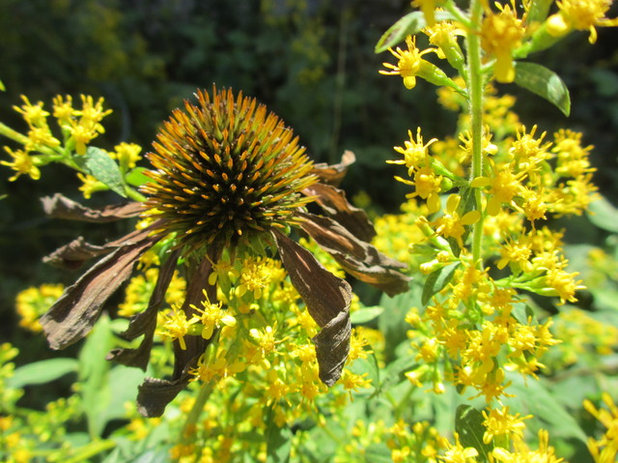
Benjamin Vogt / Monarch Gardens
Fall: A succession of blooms. A clump of zig zag goldenrod (
Solidago flexicaulis) grows on the north side of the house. It loves dry shade and happens to smell like my late grandmother’s perfume; it’s also inundated with pollinating insects of every kind. From this image I learned a lesson, or at least it confirmed one of my goals in any bed design: succession gardening. When one flower stops blooming, another starts. I also just like the aesthetic juxtaposition of the spiny coneflower with wilted petals and the fresh, bright goldenrod. Keep teaching me, garden, keep teaching me.
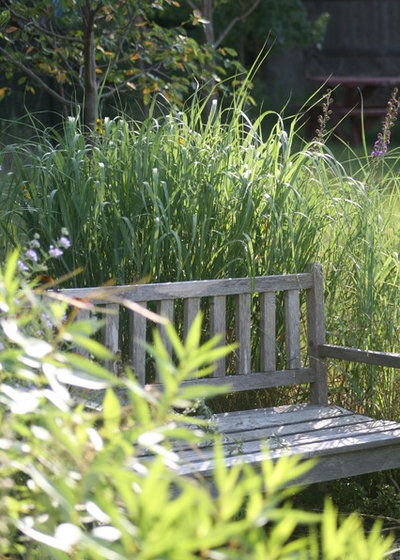
Benjamin Vogt / Monarch Gardens
An old friend. We all have areas of the garden we love to look at for whatever reason — a perfect place that just feels right or somehow happened to turn out how we’d hoped. These are comforting places that seem to know us well. I’ve always enjoyed this angle in one corner of my garden — the bright leaves of
Amsonia illustris in front, the long wooden bench weathered and gray and a billowing spray of Indian grass behind, about to send up its ornamental flower stalks. This is one area that changes little from year to year, and it’s nice to have that in a garden that constantly evolves and teaches new lessons.
Tell us: How has your gardening year gone so far? What are you looking forward to in fall?
More:What to do in your garden this month
How I Learned to Be an Imperfect Gardener





